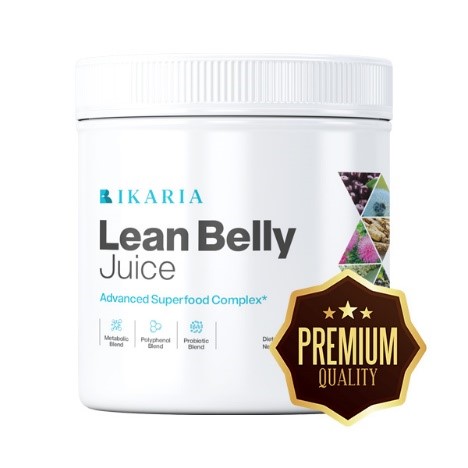Good health begins with what you prepare dinner, and cooking – whether or not sauteing, roasting or baking – virtually all the time begins with some kind of oil. Even if we’re not cooking with oil, we’re nonetheless including it to our food in hidden methods, like once we put mayonnaise on a sandwich or unfold butter on toast.
It’s arduous to keep away from oil in our fashionable food regimen, and fortunately we don’t must. There are loads of oils that supply heart-healthy fat, antioxidants and nutritional vitamins. You simply have to select the best ones.
Below, we’ll information you thru the healthiest cooking oils – which of them you’ll need to preserve as your kitchen staples and which of them you must attempt to keep away from.
What are cooking oils and vegetable oils?
Oil is a sort of fats. And fats, regardless of all its controversy, makes food style good. Plus, we’d like fats in our food regimen – effectively, healthy fat. Cooking oil additionally provides taste and texture to our dishes and retains food from sticking to pots and pans.
We derive our cooking oils from a variety of sources, however the oils mostly utilized in our kitchens are the merchandise of crops, seeds and nuts. These fall below the broad class of “vegetable oils.”
This may be complicated – you’ve possible seen bottles labeled “vegetable oil” on the grocery retailer, however these typically comprise an unpredictable combination of a number of the vegetable oils we’ll talk about beneath, a combination which will or will not be made up of the healthiest ones.
Why some cooking oils and vegetable oils are more healthy than others
Vegetable oils are usually more healthy than different oils and fat as a result of they’re composed predominantly of unsaturated fat versus saturated fats.
Unsaturated fat, which embrace each polyunsaturated and monounsaturated fat, are more healthy than saturated fats. They increase your degree of fine ldl cholesterol, or HDL ldl cholesterol, whereas concurrently reducing your dangerous ldl cholesterol, or LDL ldl cholesterol. This is nice for coronary heart health and may lower your threat of coronary heart illness, coronary heart assault and stroke.
Saturated fats, however, does the alternative when consumed in massive quantities. It causes a rise in dangerous ldl cholesterol and a lower in good ldl cholesterol. Like most issues, saturated fats is okay carefully: The Dietary Guidelines for Americans advocate that lower than 10% of your day by day energy come from saturated fats.
Within the class of polyunsaturated fat are two extra fat to think about: omega-3 fatty acids and omega-6 fatty acids. We must devour a steadiness of each for optimum health, however our Western food regimen is heavy on omega-6.
To study extra in regards to the several types of fat, go to our weblog on healthy vs. unhealthy fat.
The distinction between refined and unrefined cooking oils
The manufacturing of vegetable oils – the precise extraction of oil from varied seeds, nuts and plant elements – isn’t all the time a simple course of. Sometimes varied combos of chemical and heat-based methods are used along with the bodily urgent to get essentially the most oil doable out of the supply materials. Oils which might be made with out warmth or chemical compounds are generally labeled “cold-pressed” or “expeller-pressed.”
Unrefined oils are instantly bottled after extraction and offered as is. This means unrefined oil, typically marketed as “virgin” oil, maintains a lot of the pure properties that give it stronger flavors and extra vitamins. At the identical time, these pure properties shorten the oil’s shelf life and make it much less appropriate for high-heat cooking.
Refined oils bear additional processing after extraction to eliminate impurities. This lengthens their shelf life and makes them nice selections for all of your cooking wants. But this extra processing removes their dietary advantages and makes them “neutral,” the identify for oils that don’t have a robust taste. Neutral oils aren’t a nasty factor, and can be utilized for cooking dishes with out including further, maybe undesirable, tastes.
Cooking oil vs. cooking spray
Cooking spray is an aerosol type of cooking oil that is available in a sprig can. It sometimes has fewer energy than cooking oil and can be utilized to evenly coat frying pans, baking dishes and oven trays with out including further energy to your food.
The draw back? Cooking spray is much less flavorful and infrequently incorporates different components, like soy lecithin and sure chemical gases that create the aerosol impact. Cooking spray is completely advantageous to make use of sometimes, however attempt to alternate it with the liquid type of cooking oil as effectively.
Cooking oil vs. butter
The debate between butter and cooking oils is an advanced one, with no easy reply. Butter incorporates a better quantity of saturated fats than practically all cooking oils, with 7 grams in simply 1 tablespoon. That’s practically a 3rd of the overall really useful day by day consumption of saturated fats.
However, butter can deal with high-heat cooking higher than many cooking oils and is taken into account a “whole food,” which means it’s made with out food components or chemical compounds (relying on the kind you purchase). Certain cooking oils, regardless of being low in saturated fat, can contain chemical compounds of their manufacturing course of that inevitably seep into the completed product.
No matter what selection you make between butter and oil, pay attention to how a lot you’re utilizing in your day by day cooking and eating in your general food regimen. And all the time keep away from each margarine and shortening. They could comprise a dangerous sort of fats referred to as trans fats.
Cooking oil smoke level, and the very best oils for frying
Every cooking oil has a “smoke point,” which is the very best temperature an oil can attain earlier than it begins to burn and break down, releasing dangerous substances referred to as free radicals. Free radicals are compounds that may result in power irritation and illness after repeated publicity.
This is why you must think about the kind of cooking you’ll be doing and decide the best cooking oil for the job. In the checklist beneath, we’ll embrace the particular smoke level temperature for every of our healthy cooking oils, however right here’s a breakdown by fashion of cooking:
- Best oils for high-heat cooking: Avocado oil, peanut oil, canola oil, safflower oil and sunflower oil
- Best oils for medium-heat and low-heat cooking: Olive oil and sesame oil
The healthiest cooking oils
It looks like there are extra cooking oils than ever earlier than, and opinions on the very best or healthiest ones are consistently shifting. We’ll lead you thru the more and more huge array of oils in the marketplace and supply data on their contents so you may make essentially the most knowledgeable choices on the subject of your cooking.
Good nutrition is constructed on selection, and it’s vital to incorporate an array of several types of oils in your food regimen.
Olive oil
Olive oil is made out of urgent complete olives and gathering the oil they expel. Olives and olive oil have a starring function within the Mediterranean food regimen, which is taken into account by many clinicians to be among the best diets for each coronary heart and mind health.
And rightly so – olive oil is among the healthiest oils, with its high quantity of monounsaturated fat and naturally occurring antioxidants. Olive oil in its purest and least processed type is named further virgin olive oil. This is the healthiest sort, because it nonetheless has all or most of its dietary advantages. And, not like different unrefined oils, it’s protected to prepare dinner with further virgin olive oil.
- Smoke level: 320-376 levels Fahrenheit
- How to make use of it: Refined olive oil, which is the cheaper counterpart to further virgin and chilly pressed varieties, is a advantageous possibility for sauteing, baking and Extra virgin olive oil has stronger flavors that may be higher enjoyed in salad dressings and sauces, or just as a dip for bread.
Avocado oil
Avocado oil is extracted from mashing the smooth inexperienced within the avocado, often known as the avocado pulp. Avocado oil boasts high concentrations of monounsaturated fat and healthy antioxidants, very similar to olive oil. However, olive oil nonetheless claims the highest spot because the healthiest oil as a result of it incorporates extra potassium, calcium and iron than avocado oil. The monounsaturated fats content material of avocado oil makes it very best for high-heat cooking.
- Smoke level: 520 levels Fahrenheit
- How to make use of it: Like olive oil, avocado oil is a good selection for sauteing and roasting. But avocado oil has a better smoke level, so it may be used for recipes that require extra warmth, like searing and grilling meat or cooking a stir-fry. It can be eaten by itself and combined in salad dressings or sauces.
Note: Those taking the anticoagulant Warfarin needs to be cautious of avocado oil, as avocado can intrude with its efficacy.
Sunflower oil
Sunflower oil is made out of urgent sunflower seeds and extracting the oil. There are 4 varieties accessible within the U.S., however the very best one for cooking is the high oleic selection (oleic is a sort of monounsaturated fats). High oleic sunflower oil is wealthy in monounsaturated fat, making it a healthy selection for all of your high-heat cooking wants. It’s additionally very low in saturated fats, with simply 1 gram per tablespoon.
Sunflower oil additionally boasts some antioxidant properties, however these advantages have a tendency to interrupt down in high-heat cooking.
- Smoke level: 450 levels Fahrenheit
- How to make use of it: Sunflower oil works effectively for recipes that require high warmth like searing, sauteing, roasting, grilling, frying and deep-frying.
Canola oil
Canola oil is extracted from the seeds of the canola plant. With its low ranges of saturated fats and high focus of monounsaturated fat, canola oil is nice to make use of in every kind of cooking, particularly frying.
Canola oil has garnered a nasty popularity previously on account of the canola plant’s shut relation to the rapeseed plant. Oil made out of seeds of the rapeseed plant can have a considerable amount of erucic acid, which is poisonous to people. Canola oil, however, incorporates a innocent quantity of erucic acid.
- Smoke level: 400 levels Fahrenheit
- How to make use of it: Canola oil is extraordinarily versatile and may deal with the warmth wanted for sauteing, grilling, frying and deep-frying. You may also use it to maintain baked items from sticking to your pans.
Peanut oil
Peanut oil is made by extracting oil from peanuts, a course of that may contain roasting, crushing or boiling them. The oil incorporates largely monounsaturated fat, adopted by polyunsaturated fats and only a small quantity of saturated fats. However, peanut oil is high in omega-6 fatty acids, so you could need to restrict your consumption or attempt to steadiness it out with omega-3s.
Refined peanut oil is extra closely processed to take away its allergen parts, however individuals with a peanut allergy ought to nonetheless be cautious of its widespread use in eating places.
- Smoke level: 350 levels Fahrenheit (unrefined), 450 levels Fahrenheit (refined)
- How to make use of it: Peanut oil is good for high-heat cooking. Use it for stir-frying and deep-frying.
Sesame oil
Sesame oil is extracted by crushing uncooked or toasted sesame seeds. The uncooked sesame seeds create sesame oil, and the toasted ones make toasted sesame oil. Sesame oil incorporates many antioxidants and healthful vitamins, like vitamin E and phytosterols, each of which enable you struggle free radicals and preserve ldl cholesterol low. Sesame oil incorporates largely monounsaturated fat, making it an awesome possibility for high-heat functions.
- Smoke level: 410 levels Fahrenheit
- How to make use of it: Sesame oil is frequent in Asian dishes due to its taste profile. And with its high smoke level, it’s nice for sauteing, stir-frying and deep-frying. Toasted sesame oil, however, is finest used as a ending oil or combined in salad dressings and sauces.
Safflower oil
Safflower oil is extracted from the seeds of the safflower plant. It is available in two types, high linoleic and high oleic. High oleic is the commonest type in the marketplace, and it incorporates extra monounsaturated fat. This makes most safflower oil bought from the grocery retailer good for frying and sauteing. However, not like most different oils, safflower oil doesn’t provide many different dietary advantages.
- Smoke level: 510 levels Fahrenheit
- How to make use of it: You can use safflower oil for frying functions, however there are extra nutritious choices on the market.
Cooking oils to keep away from should you can
No oil is completely off the desk, however there are some which have the potential to be detrimental to our health resulting from a focus of undesirable fat.
Coconut oil
Coconut oil consists of practically 90% saturated fats. By comparability, butter is simply 64%. The saturated fats content material is what makes coconut oil liquid in heat temperatures and strong in cooler temperatures.
Coconut oil is usually utilized in many Southeast Asian cuisines, and it’s completely advantageous to eat once in a while. But you have to be utilizing largely vegetable oils in your cooking, in order that unsaturated fat all the time outpace saturated fats.
Palm oil
While palm oil is a more healthy selection than butter, it’s nonetheless high in saturated fats. Palm oil may be present in all kinds of packaged items right here within the U.S., every part from ice cream to shampoo to sliced bread.
When it involves cooking, attain for the vegetable oils listed above as a substitute of palm oil.
Corn oil
In order to make corn oil, the corn has to bear an elaborate extraction course of involving warmth and chemical compounds. While corn oil does comprise some healthy fat and nutritional vitamins, it’s closely processed and refined. It’s additionally filled with omega-6 fatty acids, extra so than most different vegetable oils.
Soybean oil
Soybean oil is among the most frequently consumed oils within the U.S. due to its use in quick food and packaged items. While it’s high in omega-6 fatty acids, there’s extra that makes it an oil to keep away from. Recent studies have discovered that chemical compounds in soybean oil may enhance the chance of diabetes, weight problems, Alzheimer’s illness and anxiousness by affecting the operate of the hypothalamus within the mind.
How a lot cooking oil to make use of
It’s vital to keep in mind that cooking oils are fats, and though some fat are higher for us than others, they need to all be eaten carefully.
According to the Dietary Guidelines for Americans 2020-2025, grownup males and women eating a 2,000-calorie day by day food regimen ought to devour not more than 6 teaspoons of oil every day, or simply 27 grams.
Keep in thoughts that this day by day serving advice consists of oils present in meals in addition to the oil you employ to prepare dinner. Foods which might be naturally oily, together with fish like salmon, trout and herring, are completely different from processed, packaged food with numerous added oils – however each needs to be included when calculating a day by day consumption quantity. So, whereas it’s satisfying to splash oil right into a pan with abandon, be conscious of how a lot you’re pouring so that you don’t surpass these dietary tips.
Whether you’ve already chosen your cooking oil otherwise you’re nonetheless perusing the oil aisle on the grocery retailer, there are some things you are able to do to be sure you have the very best cooking and eating expertise on the subject of oils and past:
- Check the nutrition labels and ingredient lists of packaged meals for grams of fats and sorts of oils listed. Avoid each partially hydrogenated and hydrogenated oils, that are types of dangerous trans fats.
- Buy butter made with olive oil as a substitute of canola oil, and keep away from margarine containing trans fats. Choose margarine that is available in a bath as a substitute of in stick type as a result of it has much less saturated fats.
- Most cooking oils go dangerous 3-6 months after opening. Keep your cooking oils recent by storing them in a cool, dry place away from daylight. Refrigerate oils that comprise added components like garlic, chili peppers and herbs.
- When cooking, enable your oil to warmth up slowly. If the oil begins to smoke, throw it out and start over with some new cooking oil. And keep away from reusing oil you’ve already cooked with, as a second spherical of heating could cause the oil to interrupt down and launch cancer-causing compounds.
Need some assist navigating the world of cooking oils? Talk along with your major care physician or clinician, or considered one of our educated dietitians.



















Discussion about this post